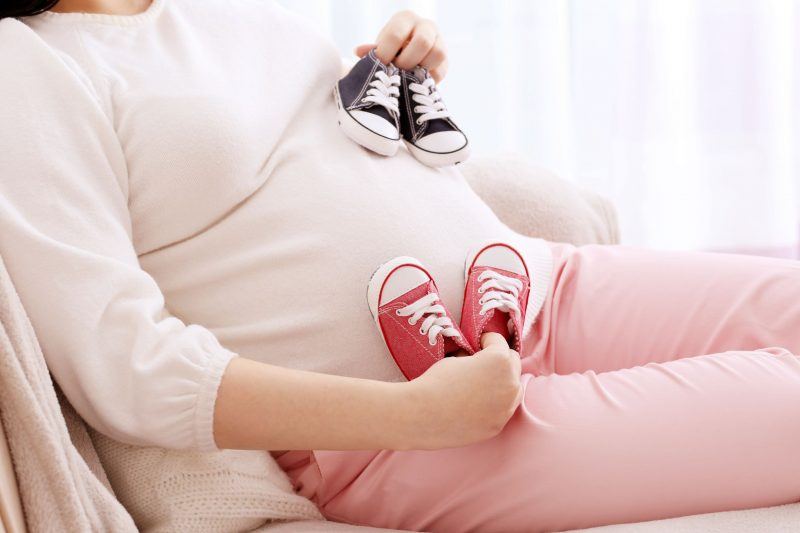By Brian E. Brocato, D.O., Maternal-Fetal Medicine at Brookwood Baptist Health
Twins. There’s something almost mysterious about them. When you do an ultrasound and see two babies growing, people are just beside themselves. There’s something really special about the whole experience.
But even with all the excitement and anticipation that comes with having twins, it’s my job to educate my patients on exactly what a twin pregnancy entails. And contrary to popular belief, not all twin pregnancies are created equal.
A closer look at the different types of twin pregnancies
First off, twins can come one of two ways. They can start as one embryo (one egg fertilized by one sperm) that splits, or they can start as two separate embryos (two separate eggs fertilized by two separate sperm.)
How they start goes on to determine which type of twins they are, and this is based on whether or not the babies share a placenta and/or a sac. (Below, “chorionic” means how many placentas while “amnio” means how many sacs.)
- Monochorionic-diamniotic. These twins share a placenta but have their own sacs.
- Monochorionic–monoamniotic. These twins share both a placenta and sac.
- Dichorionic–diamniotic. These twins each have their own placenta and their own sac.
Since each has their own set of risks and complications, it’s critical to determine which type of twins you’ll be having.
I tell my patients all the time – if the babies don’t share a placenta (dichorionic), they live in the same apartment building, but they have their own apartments. If one doesn’t pay the bills, it doesn’t affect the other one.
But if they share the same placenta (monochorionic), they live in the same apartment building, and they share an apartment. One can affect the other.
What to expect when you’re having dichorionic twins
Having dichorionic twins, where there are two placentas, is truly like having two singletons in the womb. We have two individual babies where one will not affect the other, and these typically aren’t considered high-risk pregnancies unless there’s something else going on.
The primary risk with dichorionic twins is preterm labor. While your doctor will continue to monitor the growth of the babies, they’ll also frequently ask about any signs or symptoms of labor. Regularly measuring the length of the cervix to look for any risk of preterm labor is also common.
Why monochorionic twins are at higher risk
Monochorionic twins who share a placenta have a specific set of complications that your doctor will closely monitor. This ultimately means you’ll be seeing your doctor more often than if you were having dichorionic twins.
Monochorionic-diamniotic, or mono-di twins who share a placenta but have separate amniotic sacs, can experience what’s called Twin Twin Transfusion Syndrome, or TTTS. With TTTS, the placenta is not shared equally; one baby is getting too much blood flow from the placenta while the other baby is getting too little. This occurs in 10-15% of monochorionic twins.
The good news is that this condition is very treatable if caught early, which is why your doctor will monitor for this specific complication starting at 16 weeks. If TTTS does occur, an in-utero laser procedure called laser photocoagulation of placental vessels can be performed at a specialty center and can actually cure the imbalance of blood flow and nutrients.
Monochorionic–monoamniotic twins have the same complications as the mono-di twins. But since they also share the same sac, we have to be careful of the fact that their cords can become entangled during pregnancy.
Twin pregnancies and prenatal care
If you’re carrying twins, generally, you can expect to see the doctor more than if you were carrying a singleton, but the biggest difference is that you’ll have more ultrasounds.
That being said, you may see your doctor even more if you’re dealing with a condition like gestational diabetes, preeclampsia or hypertension disorders, which are all common in twin pregnancies. The truth is, these could even mean hospitalization or earlier delivery.
Twin pregnancies: Yes, you should expect two healthy babies
Though we’ve discussed a range of risks and potential complications, the reality is that the majority of women carrying twins will go on to have healthy babies.
Along with having the technology to better diagnose and treat complications, the medical care for premature babies is better than ever before. So even with the risks involved, I’m confident in saying that women carrying twins have every reason to expect a good, healthy outcome.
Learn more about twin pregnancies from Alabama Fertility in Birmingham, AL
At Alabama Fertility Specialists, we treat all patients with the care and compassion that complex reproductive issues require. We encourage you to ask your doctors and nurses at Alabama Fertility Specialists as many questions as you need to in order to find out more.
